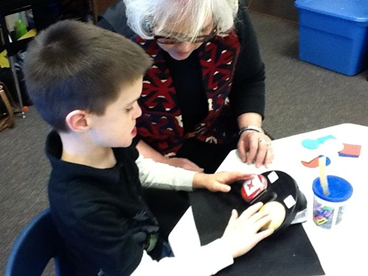Overview of Communication Methods
Regardless of their age or current level of development, all children and youth who are deaf-blind must have methods of communicating available to them that allow for both receptive and expressive communication.

There are a wide range of methods—also called modes or forms—of communication used by children who are deaf-blind. They include vocalizations, gestures, objects, pictures, speech, sign language, and more. Most will use multiple methods. The best methods for each child are based on an assessment of their individual needs and abilities.
As an educational team plans a communication development program for a deaf-blind student, it is critical for team members to know all the available modes and devices that could be effective in meeting the student’s communication needs and how they can be designed into a comprehensive communication system. (Rowland, Schweigert, & Prickett, 1995)
Introductory Resources
Learn More
Offline Resources
Crook, C., Miles, B., & Riggio, M. (1999). Selection of communication modes. In B. Miles & M. Riggio (Eds.) Remarkable conversations: A guide to developing meaningful communication with children and young adults who are deafblind (pp. 124-145). Perkins School for the Blind.
Rowland, C., Schweigert, P. D., & Prickett, J. G. (1995). Communication systems, device, and modes. In K.M. Huebner, J. G. Prickett, T. R. Welch, & E. Joffee, Hand in hand: Essentials of communication and orientation and mobility for your students who are deaf-blind (pp. 219-259). AFB Press.
Reference
Rowland, C., Schweigert, P. D., & Prickett, J. G. (1995). Communication systems, device, and modes. In K.M. Huebner, J. G. Prickett, T. R. Welch, & E. Joffee, Hand in hand: Essentials of communication and orientation and mobility for your students who are deaf-blind (pp. 219-259). AFB Press.
KEEP EXPLORING